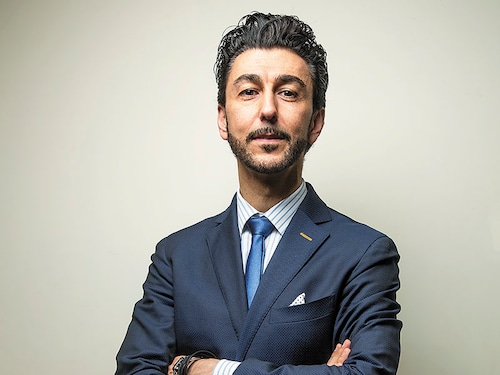Hyperloop is the safest system ever conceived by humanity, says Bibop Gresta
Bibop Gresta, chairman and co-founder of Hyperloop Transportation Technologies, explains how his company's technology can be adapted to Indian realities



Bibop Gresta, chairman and co-founder of Hyperloop Transportation Technologies
Image: Joshua Navalkar
Q. Much is said about the ultra-high speeds that the Hyperloop can attain. Is that the key selling point of the technology?
The Hyperloop can reach a speed of 1,223 kmph. But don’t think you can go at 1,223 kmph all the way. To deploy the Hyperloop technology right away, we need to use the existing infrastructure of highways and rail roads. This means we have to slow down at several points to maintain passenger comfort. But the combination of renewable energy that we use—solar panels, wind and kinetic energy—means the capsule can generate electricity. In climates where solar panels are not efficient, we [can] use geothermal power. This can produce up to 30 percent more energy [than the Hyperloop consumes].
Q. Is the technology cost effective?
In America, we have an average cost of $20-40 million per kilometre. [In India] we need to do a feasibility study to answer this question. Here, the cost of labour and construction is cheaper. India also has an amazing manufacturing industry and you have regions like Jharkhand where 40 percent of the resources we need like copper, aluminium, steel and carbon steel are available. The entire system can be built at one-fourth the cost of a high-speed train. The cost of operation too can be one-fifth of it since there are almost no maintenance costs for a Hyperloop capsule.
Q. Safety is a concern...
I do not understand why. The Hyperloop is the safest system ever conceived by humanity. It’s like flying an airplane but on the ground. Maintaining life in a specialised vessel is a technology that is 40 years old. We do it over and over again by sending people to space and bringing them back. That’s way more difficult than what we need to do with the Hyperloop. Imagine having a tube with people in similar conditions [as space capsules or airplanes] inside it, if something goes wrong we can re-inject air and save their lives. So you have all the positive aspects of the air travel industry, without the negative ones.
Q. When do you really see the first Hyperloop network running anywhere in the world?
We have finished the simulation and testing of the single elements, and are now ready to build the first full-scale Hyperloop. The best opportunity we currently have is in Abu Dhabi, because the government wants to proceed with it full scale. We also have four other governments that are in the same position—California, Slovakia, Czech Republic and France.
These are the places where we have signed deals and are in advanced talks. Toulouse in France, in particular, is an interesting opportunity because they are not only giving us the land, but also an entire building for a research and innovation centre. We want to do the same in Abu Dhabi.
First Published: Mar 21, 2017, 07:56
Subscribe Now